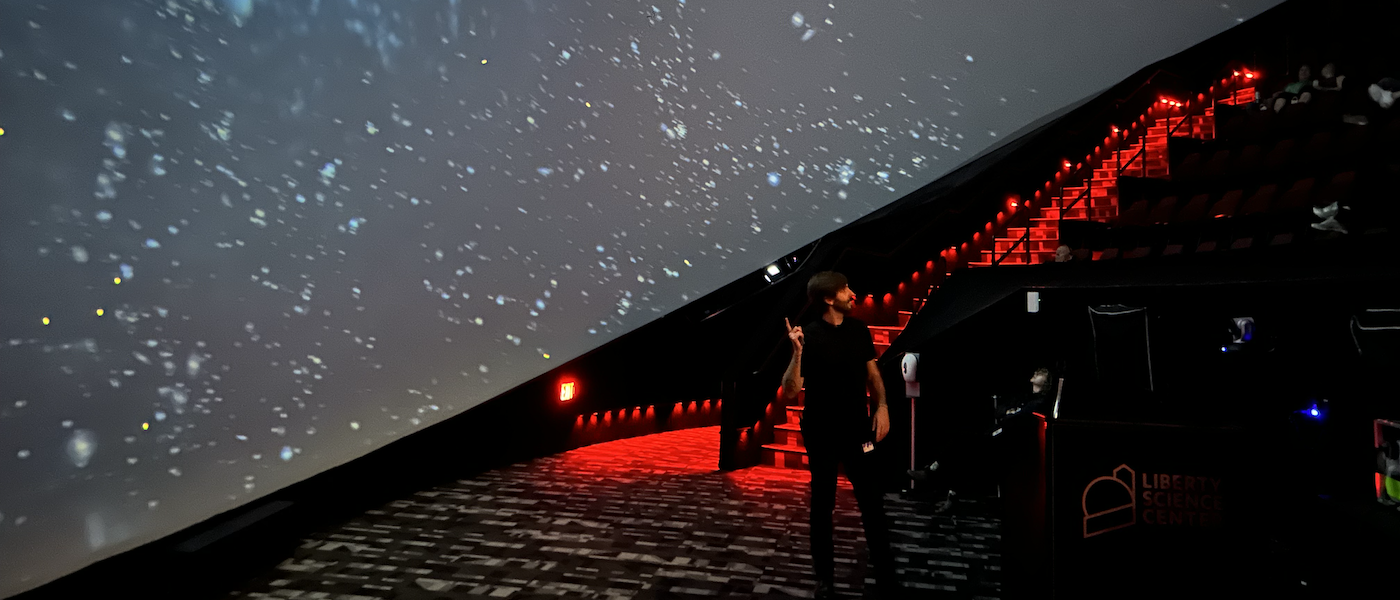Dr. Adrian Price-Whelan’s Space Talk explores invisible forces, such as dark matter and dark energy
On April 7, 2023, Liberty Science Center hosted Dr. Adrian Price-Whelan from the Center for Computational Astrophysics (CCA) at the Flatiron Institute in New York City for our latest Space Talk: “How Invisible Forces Shape Galaxies.”
Our galaxy, the Milky Way, has been around for about 13.5 billion years and has been shaped over time by many different forces. Some of these forces come from objects that we can see, like the gravity from stars and the dense area toward the center of the Milky Way. Dr. Price-Whelan’s work focuses on how our galaxy, and others, are shaped by things that we cannot see.
The matter that we can see with our eyes – or detect with traditional telescopes – only makes up about five percent of the universe! The rest is made up of dark matter and dark energy, forces that we can detect but are still trying to understand.
The Milky Way, like all galaxies, is influenced and shaped by dark matter. During his Space Talk, Dr. Price-Whelan explored what clues we can find by studying our galaxy to better help us understand dark matter and how it works. To get there, Dr. Price-Whelan guided viewers throughout the universe and in the study of stars on the outskirts of our galaxies to better explore this mysterious force.
“Despite decades of theoretical work, experiments to detect it on Earth, and astronomical observations, we still know very little about dark matter!” said Dr. Price-Whelan.
“But with amazing new datasets from survey space missions like the Gaia Mission, which are taking incredibly precise measurements of the positions and motions of stars in our Galaxy, we now have the data and tools to make new progress on this problem. Stay tuned over the next few years to hear more!”
Dr. Price-Whelan also discussed what it feels like to present his work in LSC’s Jennifer Chalsty Planetarium, the biggest planetarium in America.
“Even when I give talks to audiences of astronomers, I try to help everyone visualize the distribution and layout of the stars and objects I talk about. Even as astronomers used to thinking in terms of obscure units like ‘kiloparsecs,’ it's often hard to grasp the layout and configuration of structures around the galaxy,” he says.
“A planetarium is an amazing venue to bring data and concepts to life.”
Watch below to see Dr. Price-Whelan's full presentation in 360 degrees:
Join us next month, on May 4, for our next Space Talk featuring astronomer Dr. Brian Metzger from the Department of Physics at Columbia University who will explore gravitational waves from some of the most energetic events in our universe and how they create heavy elements like gold, silver, and platinum.
Click here to learn more and reserve your spot now.
